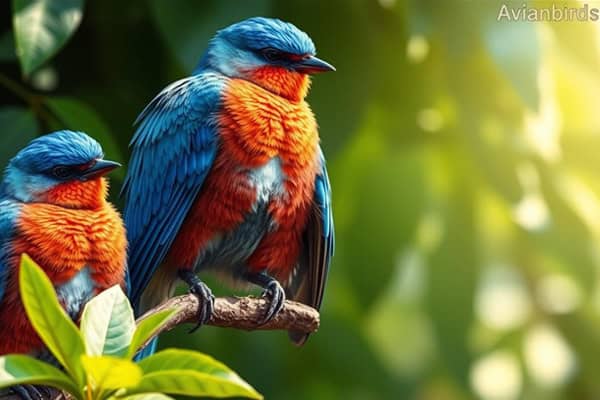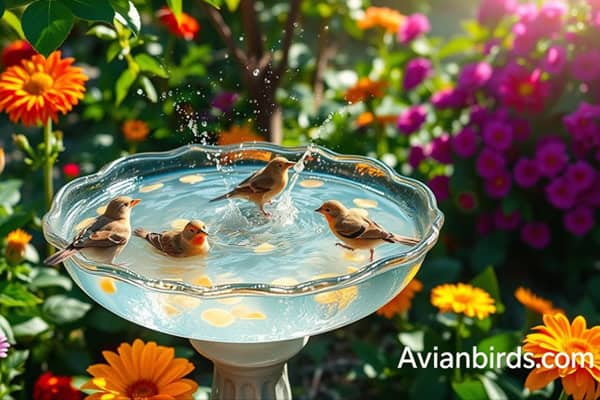Birds That Lay Blue Eggs: Nature’s Colorful Surprise
Did you know almost 80 types of birds lay blue eggs? This amazing fact shows how nature surprises us. We’ll look into the world of birds with blue eggs, like the American Robin and the Eastern Bluebird. These eggs are special for survival and reproduction. Let’s explore the secrets of these stunning eggs together.
Introduction To Blue Eggs
Blue eggs are a wonder for those who love nature. They show how birds have adapted over time. These eggs are not just pretty; they are key to the birds’ survival.
Blue eggs offer advantages. They can blend in with their surroundings, helping baby birds stay safe. This helps them avoid predators.
Birds like the American Robin and Eastern Bluebird lay blue eggs. They use special ways to help their babies survive. Learning about egg colors helps us see how birds and their homes are connected.
Studying blue eggs helps us understand birds better. It shows how important these eggs are in nature.
Significance In Nature
Blue eggs are more than just colorful. They use camouflage to hide in their surroundings. This helps them stay safe from predators. The blue color makes them look like the sky, helping them blend in.
Blue eggs also help with egg temperature regulation. The color affects how much heat they get from the sun. This is key for the eggs to hatch successfully. It shows how birds have evolved to care for their young.
Birds That Lay Blue Eggs
Exploring the world of bird species that lay blue eggs opens a fascinating window into nature’s diversity. These unique egg-laying birds span various families and habitats. They show how they have adapted to survive.
Blue eggs are not just found in one type of bird. Many bird species lay blue eggs because of their genes and the environment. The blue color comes from pigments the hen adds during egg-making.
- American Robin: A classic example of blue egg layers, known for its vibrant nesting habits.
- Eastern Bluebird: Recognizable for their beautiful song and charming blue eggs.
- Mountain Bluebird: Lives in open, mountainous areas, producing stunning blue-hued eggs.
- Yellow Warbler: This small but colorful bird also contributes to the blue egg variety.
Learning about these egg-laying birds helps us appreciate avian life more. Watching their nests and the blue eggs they lay shows us nature’s beauty.
| Bird Species | Habitat | Blue Egg Characteristics |
|---|---|---|
| American Robin | Gardens, parks, and forests | Light blue with a smooth texture |
| Eastern Bluebird | Open woods and fields | Sky blue, often with faint speckles |
| Mountain Bluebird | Mountains and open spaces | Bright blue, lays around 4-6 eggs |
| Yellow Warbler | Wetlands and shrubby areas | Blue-green eggs, sometimes streaked |
Our exploration of egg-laying birds that produce blue eggs reveals a vibrant tapestry of life. Each species adds its own color to nature’s palette. This captivates birdwatchers and nature lovers everywhere.
Common Birds With Blue Eggs
When we think of birds with blue eggs, the American Robin and Eastern Bluebird come to mind. They are common in North America and loved by birdwatchers. Their nests and eggs are colorful and striking.
1. American Robin
- Scientific Name: Turdus migratorius
- Size: 23–28 cm (9.1–11 in)
- Weight: 70–100 g (2.5–3.5 oz)
- Lifespan: 2–6 years (up to 14 years in the wild)
- Diet: Primarily insects and berries; known for their distinctive orange-red breast and cheerful song.
The American Robin is famous for its light blue eggs. These eggs are in nests made of grass, twigs, and mud. A typical nest has three to five eggs.

The female Robin sits on the eggs for about 12 to 14 days. This is the start of a new life in spring.
2. Eastern Bluebird
- Scientific Name: Sialia sialis
- Size: 16–21 cm (6.3–8.3 in)
- Weight: 70–100 g (2.5–3.5 oz)
- Lifespan: 6–10 years
- Diet: Insects, fruits, and berries; known for their vibrant blue plumage and sweet song.
The Eastern Bluebird lays pale blue or white eggs. They like to nest in tree holes or birdhouses. This makes them popular with backyard bird fans.

Their eggs are smaller than the American robins but just as charming. Watching these eggs grow is a joy for nature lovers.
Uncommon Blue Egg Layers
Many birds lay blue eggs, but some are not as well-known. The Dunnock and House Finch are two examples. They show us the beauty of nature’s variety.
3. Dunnock
- Scientific Name: Prunella modularis
- Size: 12–14 cm (4.7–5.5 in)
- Weight: 18–30 g (0.63–1.06 oz)
- Lifespan: 2–3 years (up to 7 years in the wild)
- Diet: Insects, worms, seeds, and berries; often forages on the ground.
The Dunnock is a secretive bird that lives in gardens and hedgerows. It lays light blue eggs, usually three to five at a time. The female Dunnock keeps the eggs warm for about 12 days.

4. House Finch
- Scientific Name: Haemorhous mexicanus
- Size: 14–18 cm (5.5–7 in)
- Weight: 16–30 g (0.56–1.06 oz)
- Lifespan: 3–5 years (up to 10 years in the wild)
- Diet: Seeds, fruits, and vegetables; known for their adaptability to urban environments.
The House Finch is often found in cities. It lays pale blue eggs that might be speckled. These birds have two to six eggs in a clutch, and they incubate them for about 14 days.

| Bird | Egg Color | Clutch Size | Incubation Period |
|---|---|---|---|
| Dunnock | Light Blue | 3-5 | 12 days |
| House Finch | Pale Blue (Speckled) | 2-6 | 14 days |
Factors Influencing Egg Color
Bird eggs come in many colors, thanks to several factors. Bird genetics is key to this variety. The genes of a bird decide if it lays blue eggs or other colors.
What a bird eats also affects its egg color. Birds eating lots of berries have eggs with bright colors. The place where a bird nests and the weather during egg making can change the color too.
Temperature and humidity affect how pigments stick to the egg. This makes eggs come in many beautiful colors.
In short, bird genes and the environment work together to make eggs colorful. Learning about this helps us value nature’s amazing designs more.
Blue Egg Myths
Blue eggs have captured the hearts of many with their unique look. They have become part of folklore and myths across cultures. People see them as symbols of luck and wealth, adding to their mystique.
But, there are wrong ideas about blue eggs. Some think only a few birds can lay them, or that they’re very rare. This is not true.
Actually, many birds can lay blue eggs. They are more common than people think. Knowing this helps us see the beauty of bird diversity. Egg color shows how each bird is special, not its nutritional value.
- Many believe blue eggs signify good fortune.
- Some think only rare birds lay blue eggs.
- Folklore often exaggerates the scarcity of blue eggs in nature.
Learning the truth about blue eggs helps us see their real value. It makes us appreciate the beauty of birds and their eggs more.
Check Our Previous Articles:
| Birds With Red Beaks |
| Birds in South Carolina |
| Green Birds in Sarasota Florida |
| Types of Conures |
| Apple Cider Vinegar In Bird Baths |
Conclusion
Looking back at our journey, we see how beautiful and diverse birds with blue eggs are. From the well-known American Robin to the lesser-known Dunnock, each bird adds to nature’s beauty. These blue eggs help these birds survive by blending in and protecting their babies.
The color blue in eggs is more than just pretty. It shows how birds and their colors work together in nature. Learning about blue eggs helps us see the complex lives of birds and their homes.
Blue eggs remind us of the secrets nature holds. Let’s keep being amazed by nature’s colors and connect more with the birds that make our world richer. Next time you see blue eggs, think about how they help our world and the wonders close to us.







